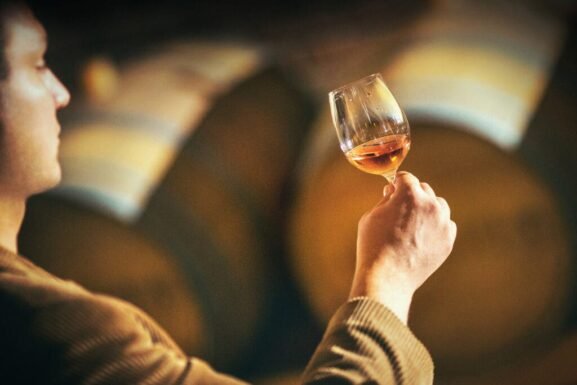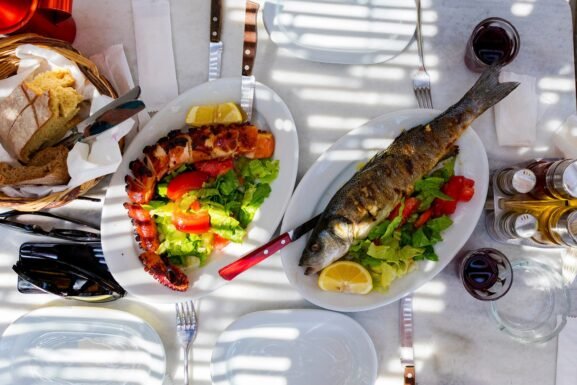Culture: Instant Coffee Gets a Craft Reboot
If the words “instant coffee” conjure visions of a muddy-tasting last resort, it may be time to change your outlook. Crystallized coffee is the latest corner store standby to get the craft treatment.
Specialty coffee companies like Chicago’s Intelligentsia, Brooklyn-born Partners and Los Angele’s Sightglass have all gotten into the granule game. In August, they were joined by Blue Bottle, an Oakland, California-based company whose cafes are associated with painstakingly precise pour-overs. Blue Bottle’s Samra Origins Craft Instant Coffee is part of a collaboration with The Weeknd that features single-origin Ethiopian beans.
Touting ethical sourcing and carefully calibrated roast levels, these instant coffees are a far cry from Folgers. Price points are similarly stratified. Each 2.11-ounce jar of Samra Origins Craft Instant Coffee retails for $29; a box of five sachets costs $19. Partners’ Specialty Instant Coffee costs $16 for six sachets, Intelligentsia offers five servings for $12 and Sightglass’ boxes of six are $17.
Given their pricing and packaging, craft crystals seem geared toward the sort of coffee drinker who habitually spends $20 on a one-pound bag of single-origin beans or $5 on a 12-ounce cold brew. The question is, are they buying?
“We do see that overlap,” says Jose Lepe, the head of sourcing for Sightglass. Travelers who want to upgrade their in-flight cup of coffee, who aren’t always satisfied with what’s offered at hotels and who don’t see a campsite as a reason to forgo quality coffee are among those he sees as poised to embrace craft instant crystals. “It can also be a gateway” to specialty coffee for those who typically drink instant, he says. “A lot of people in my family drink Nescafe. I can give them a packet of Sightglass Instant, and they’re like, ‘Oh, that’s really good.’ It helps start a conversation about why I’m so fussy about coffee.”
You May Also Like: How to Make the Best Coffee at Home According to Your Taste, Time and Budget
The trick is getting someone accustomed to paying $6.50 for a 120-servings jar of Folgers to pony up $17 for six sachets.
“It’s about $2.83 a serving,” Lepe says. “Is it worth the convenience? I think so. And it’s proven to be pretty successful for us.” Sightglass started selling 1,000 six-sachet boxes in 2019, and now sells 7,000 annually.
Jessica Easto, author of How to Taste Coffee and Craft Coffee: A Manual, is unconvinced that most instant coffee drinkers would switch “because it probably doesn’t make financial sense,” but she sees other market opportunities for craft crystals. “For people who already appreciate quality coffee, it gives them another tool to use when they can’t go to a cafe or make it themselves at home.”
Like Lepe, she’s taken instant coffee sachets when she’s gone camping or traveled without access to brewing equipment. “It would be really cool if Blue Bottle or Intelligentsia sold them on airplanes, too,” she says.
Craft crystals are also ways for those who don’t own espresso machines to make lattes and the like at home. Years prior to its collaboration with The Weeknd, Blue Bottle began developing instant espresso granules specifically because lattes were one of the most popular purchases at its cafes, explains Cara Ray, the global product director for CPG Innovation at Blue Bottle. “Our instant espresso that we launched in 2022 makes an iced latte we’d be proud to serve in our cafes.”
This use case makes a lot of sense to Easto because “espresso is so finicky. It’s impractical and expensive for someone at home to pull a bunch of shots so they can make a perfectly balanced espresso the way a barista can in a cafe.”
Take a Deeper Dive: The Primer on Coffee vs. Espresso You Didn’t Know You Needed
To some experts, admittedly, coffee-flavored crystals stirred into water don’t technically qualify as espresso, because espresso is defined in part by its pressurized brewing method. But that sort of inconsistency is par for the course in U.S. coffee culture. Ours is a caffeinated landscape where large-sized coffees are occasionally called ventis and cappuccinos are served in inconsistent sizes at all hours of the day.
American appetites and approaches to what and how we drink can and will change. Sometimes it’s a slow evolution; other times, it all happens in an instant.
Last Updated: October 20, 2023
Like what you’re reading? Learn more about:


